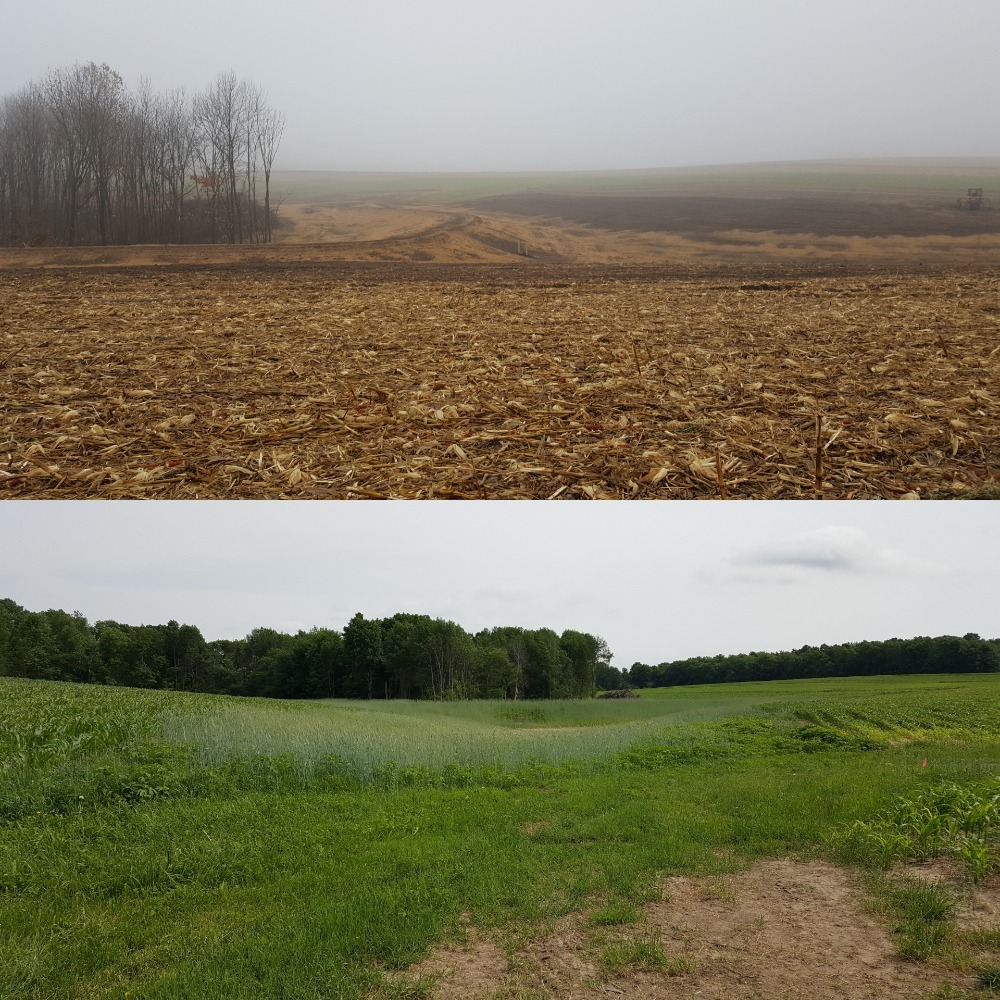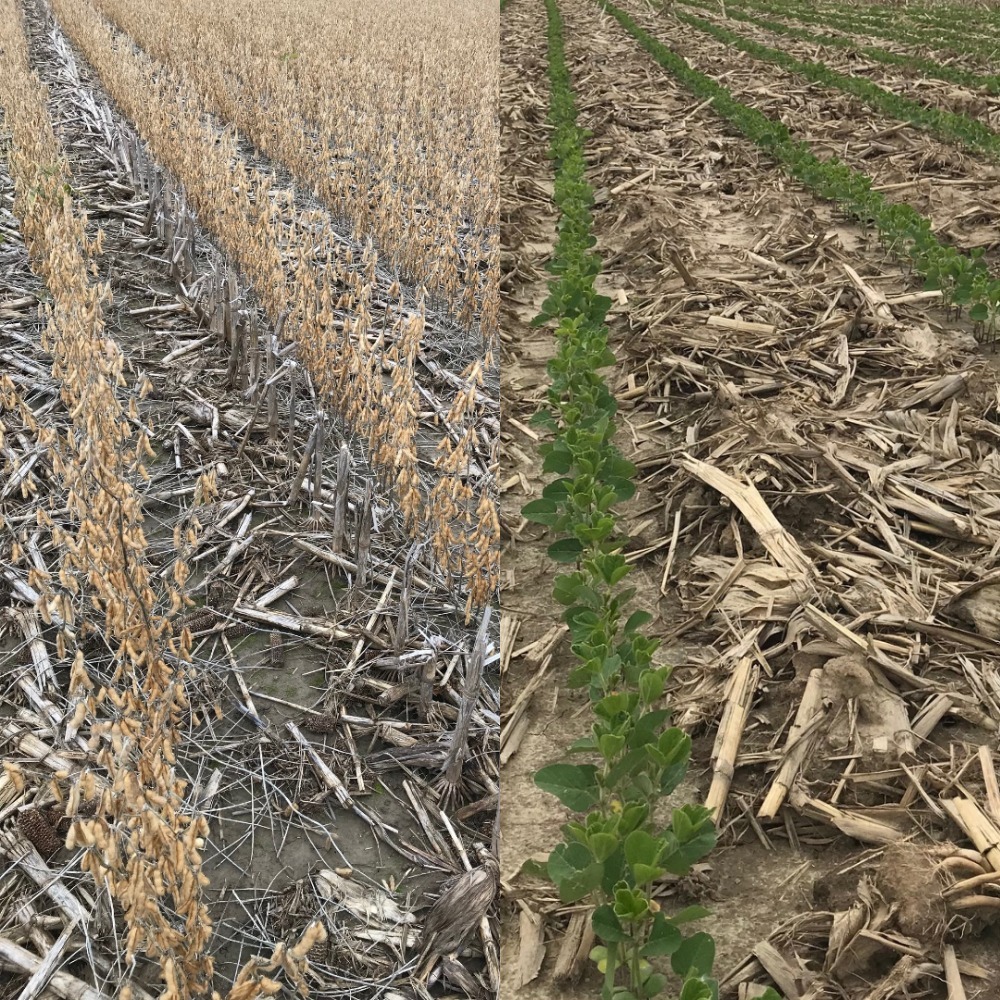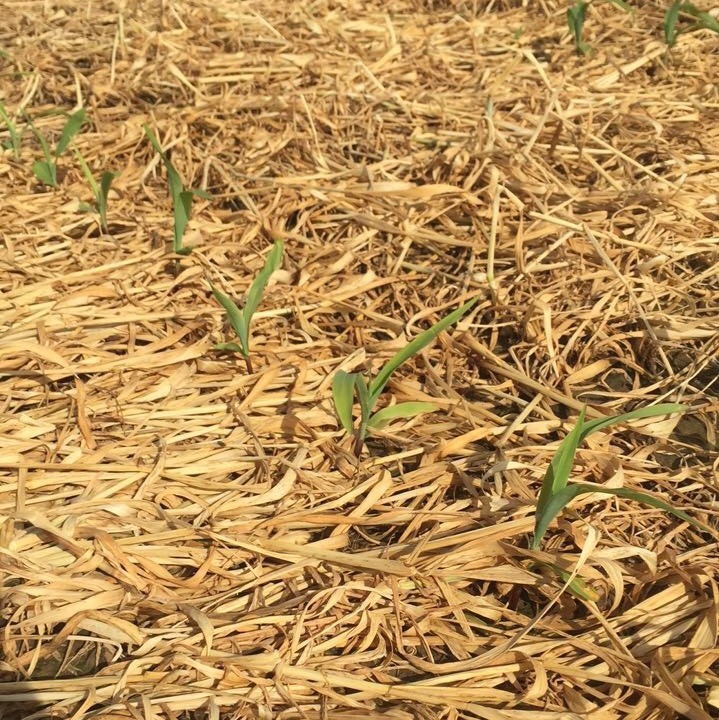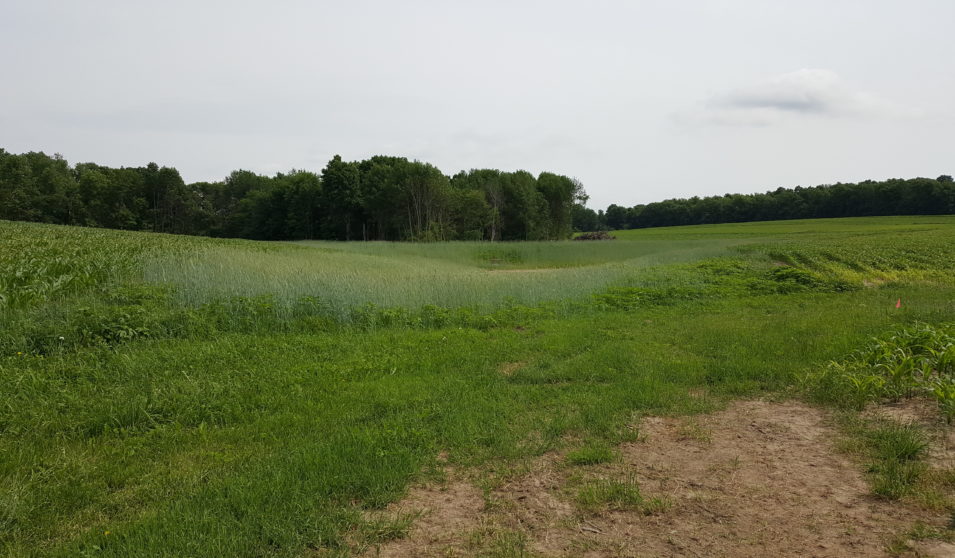Dunn County Land and Water Conservation Division (LWCD) is working with landowners and operators to address soil erosion in the Knights Creek Watershed. The area is upstream of an important flood control dam that was installed in 1970 through the Watershed Protection and Flood Prevention Act (PL-566).
According to the USDA Soil Conservation Service Project Completion Report dated June 1, 1972, “The Towns of Weston and Dunn saved an estimated $4,000 in road repairs after heavy rains on June 8, 1970 because of the three flood control dams completed recently. This estimate was given by Ruben Smith who has patrolled the roads for many years. Mr. Smith stated that the township would have lost all the culverts and much road surfacing in the valley below the dams.”
The flood control dam is still controlling flood waters today as it was initially intended, but the dam is filling up with sediment from soil erosion upstream. Dunn County removes sediment on a regular basis to keep the low flow inlet and trash rack from being buried.
To curb the soil erosion, Dunn County LWCD staff have spent
the last few years building relationships with landowners and cropland
operators, working with them to implement reduced tillage, no-till, cover
crops, grassed waterways, and grade stabilization structures in the watershed.
The project started with one eroding gully in the woods cutting up toward the crop field and several areas of ephemeral erosion in the field. The landowner, Beverly Fuhrman, and Dunn County LWCD staff developed a plan to address the eroding gully with a grade stabilization structure and install grassed waterways along the ephemeral gullies.
Dunn County LWCD staff worked with Fuhrman and her operator, Steve Lechler, to review possible changes to the rotation and tillage that would reduce soil loss to tolerable soil loss or below. After multiple meetings, an agreement was reached and signed by Fuhrman, Lechler, and county conservation staff, implementing rotation and tillage on the operation.

Once construction began on the grade stabilization structure,
neighbors began to take notice. Lechler contacted an upstream landowner and operator,
Roger Kassera, to talk about putting a waterway on his land. When Kassera visited
the construction underway, Dunn County LWCD staff asked him if he would be
interested in continuing a waterway upstream of the grade stabilization
structure past the property line on his land. Kassera agreed to work on that waterway
and one other waterway.
Dunn County LWCD staff spoke with Kassera about rotation and tillage. Kassera decided to adopt no-till instead of using vertical tillage on his crops and to try rye cover crops after soybean harvest. Dunn County LWCD continued to work with Kassera on closing a manure storage structure that has not been in use for many years.
Kassera also asked about addressing another gully on a different piece of land upstream. After looking at the grassed waterway site, Dunn County LWCD staff observed erosion upstream of Kassera’s property line.

Dunn County LWCD sent a letter and then followed up by phone with the landowner, Justen Walton. Walton operates his land using no-till and cover crops, but has found it difficult to establish waterways on this property. He agreed to work with county conservation staff to address his ephemeral erosion by installing grassed waterways on his land.
Dunn County LWCD staff assisted landowners in attaining partial funding for some of the practices from Wisconsin’s Soil and Water Resource Management Grant (SWRM), administered by the Department of Agriculture, Trade and Consumer Protection, and from the Environmental Quality Incentives Program (EQIP), administered by the Natural Resources Conservation Service.

Some of the practices mentioned are already installed, while others are planning to be constructed in the coming years. Once all the planned practices are installed, an estimated 1,000 tons of soil per year will remain in place, instead of downstream in the Knights Creek Dam.
Dunn County LWCD is hopeful these conservation efforts will continue to be discussed neighbor to neighbor in the Knights Creek Watershed and additional interest will develop in conservation.
If you would like more information, please contact Dunn County Land and Water Conservation Division at (715) 232-1496.

